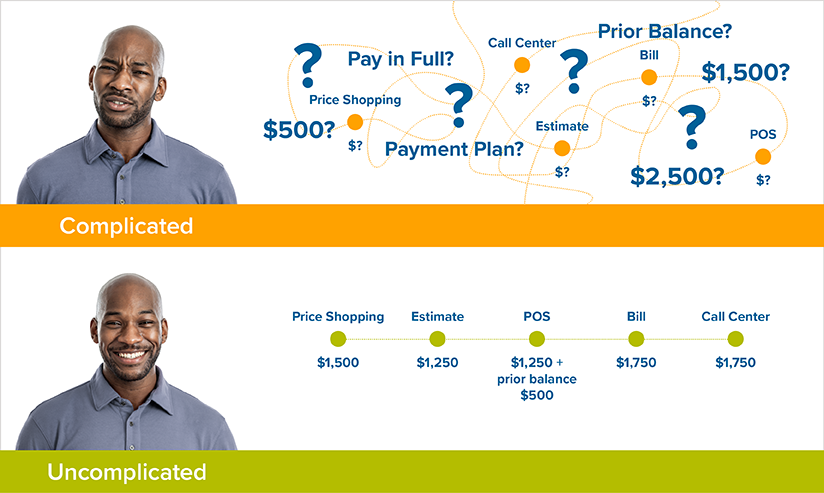April 15, 2021
“It’s Complicated” Should No Longer Define Patient Engagement

RevSpring dedicates a blog post each month to explore what matters most in healthcare engagement and payments. Last month we focused on “Know Me” and the importance of understanding and respecting how patients prefer to engage and pay their healthcare bills. This month we explore the difference between simple solutions and uncomplicated patient engagement.
Complexity, as any scientist will tell you, is a slippery idea…things that seem simple can be dizzyingly complex.(1) Nowhere is this truer than in effective patient financial engagement. Complicated processes are inherent in healthcare, but when handled effectively, patients should be blissfully unaware of the systems in play driving the engagement.
This is a topic we think and care about a lot because it goes to the heart of our mission: helping providers empathetically engage with patients and encouraging them to understand and honor their healthcare financial commitments. That’s complicated and there are many reasons why:
- Healthcare visits can be unplanned, unpredictable, and stressful
- Healthcare encounters may involve multiple procedures, which creates disparate billing and communications
- Patients usually don’t know what a service costs until after it’s been rendered
- Multiple systems and people can be involved in the payment process (EMR, staff front desk and call center, payment portal), which creates data silos and discord
- People don’t pay healthcare bills the way they pay other monthly predictable bills, such as electricity and car payments, and often need to plan for them in advance or pay them over time
Understanding Patients Uncomplicates the Engagement Experience – For Them and For You
While the work behind the scenes will always be complicated, patients and providers can have uncomplicated interactions that lead to faster payments, higher yield, and greater patient loyalty. The key is understanding patients and sharing that patient knowledge throughout the entire healthcare enterprise. This creates a common unified experience for patients, no matter what part of your organization they engage with.
It begins with understanding a patient’s financial means so you can present them with precisely the right payment options. Then making sure that front desk staff, CSRs, billing office personnel and employees who manage your EMR all have access to the same information. Consolidating insight about the patient across all these points of interaction removes the complexity because it creates consistency.

Another way to uncomplicate the engagement is to prepare patients for their financial obligations in advance. Providing estimates—and letting patients know how confident you are in them—allows them to prepare and decide whether to pay in full, set up a payment plan, or apply for financial assistance. It’s important, however, that estimates be unified with eventual billing statements so it creates clarity, not confusion.
To be clear, uncomplicating patient financial engagement requires hard, smart work “under the hood” involving data, analytics, integration and more. It’s requires a strategy that transcends a simple payment portal and a move to digital engagement. Unifying data, systems, workflows, and the user experience from end to end is the complicated work that uncomplicates patient financial engagement.
Sound untenable? Healthcare IT organizations should not be expected to do the heavy lifting. Partners who shoulder the hard work on your behalf will take care of financial clarity while you take care of your patients.
1- Simplexity: Why Simple Things Become Complex (and How Complex Things Can Be Made Simple), Jeffrey Kluger.